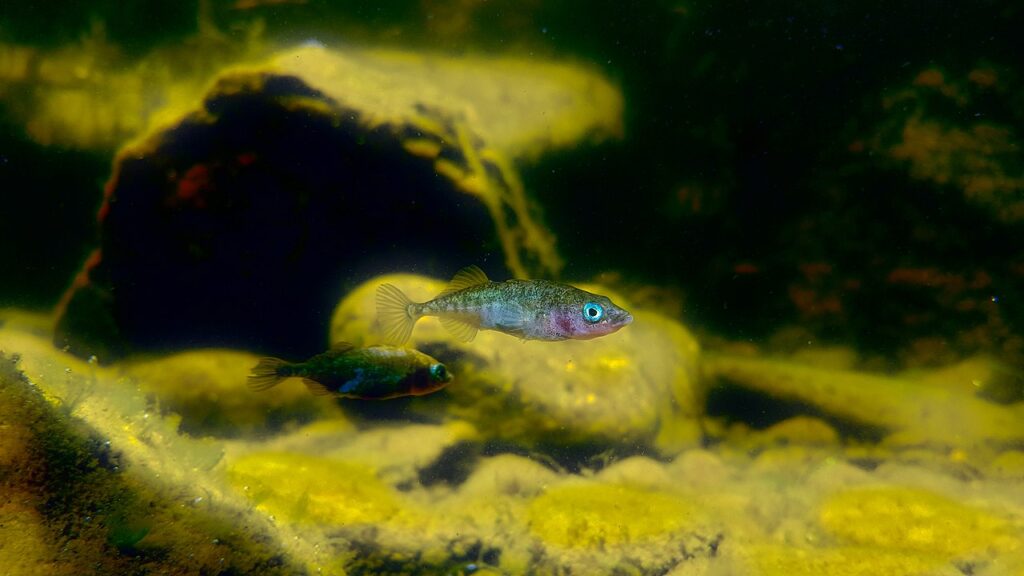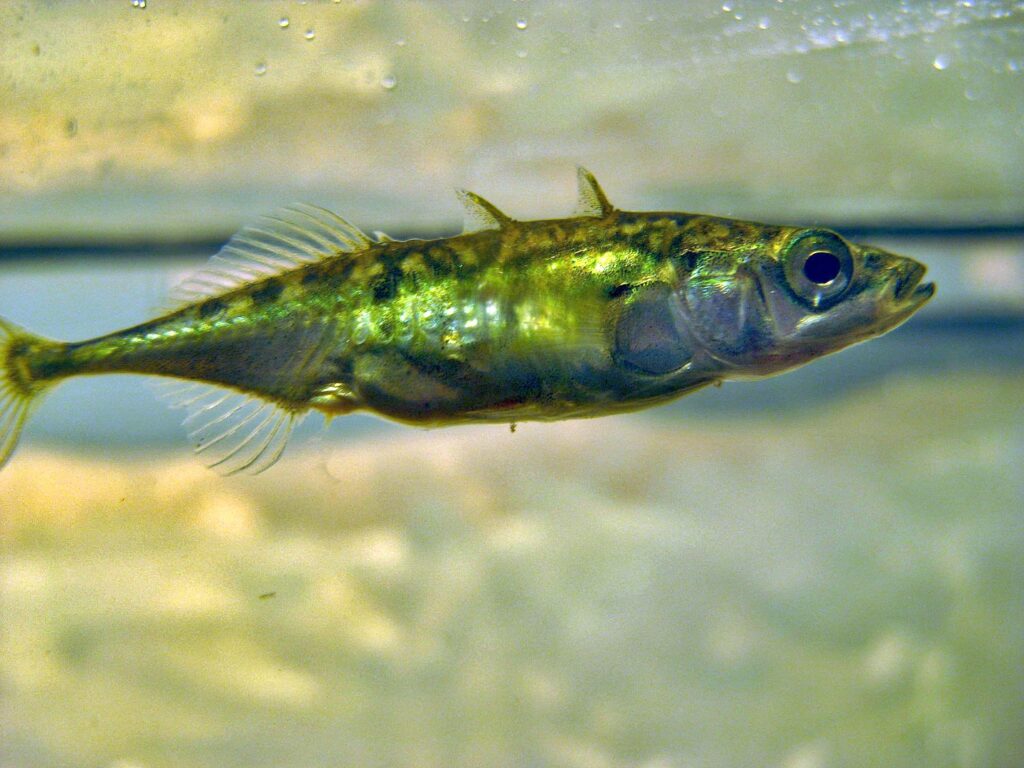Three-spined stickleback
Gasterosteus aculeatus

Threatening the fry of larger fish
The Baltic population of the three-spined stickleback has increased a lot in recent years, and the species has taken over an increasing part of the Baltic coast. It has become a threat to pike, perch, and other fish as it eats their fry. Three-spined stickleback often find cover behind jetty poles and the like.

Photo: Evan-Baldonado-CC-BY-SA
The male defends the nest
The three-spined stickleback is so named because of the protective spines located in front of the dorsal fin. The male creates a territory in which he builds a nest made from water plants. He invites multiple females by performing a mating dance. The females lay their eggs in the nest and leave, and then the male guards the eggs aggressively and tend to them until they hatch. He then continues to guard the fry for a couple of weeks.

Photo: JaySo83-CC-BY-SA
Both freshwater, brackish water, and salt water
Three-spined stickleback can live in both freshwater lakes and in brackish water. It can even migrate between freshwater and salt water, and prefers to live on soft bottoms with plenty of vegetation. But the three-spined stickleback is an adaptable species that can live in a variety of habitats, from agricultural ditches to great depths in certain lakes. The species is food for many predatory fish and also for birds such as terns.

Photo: Piet-Spaans-CC-BY
Distribution in Sweden

The West Coast, Öresund, and the entire Baltic Sea. Also in Lake Vänern, Lake Vättern, and several small watercourses in Skåne.
Threat based on the Red List

Trade regulations
CITES: Not listed.